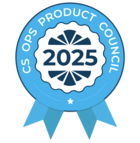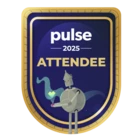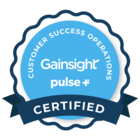Implementing Gainsight CS from scratch is both an exciting and complex challenge. At PVcase, a leading solar energy software provider, we had the unique opportunity to deploy Gainsight CS in a greenfield environment, meaning we had no existing customer success platform to migrate from. This offered both freedom and responsibility so that we could design the system exactly as we needed, but we also had to ensure it met our business needs from day one, exceeding the expectations of many in our teams.
We’re about 4 months in from full deployment, and so I wanted to create a quick post that walks through our approach to a successful deployment, the challenges we overcame, and lessons learned that could help others in a similar situation.
Understanding Our Starting Point: A True Greenfield Deployment
As an ex-Gainsight employee, I was tasked with leading this deployment. PVcase had no prior CS tool, meaning our processes were mostly manual, siloed across teams, and we as a company lacked a centralized view of customer health. This was both a challenge and an opportunity: we weren’t constrained by legacy systems, but we also had to build everything from scratch.
Before even touching Gainsight, we needed to define what success looked like for our deployment.
In the end, we agreed to focus on three core objectives:
Establishing clear customer success workflows
How should we manage onboarding, renewals, and expansion? What processes did we need to automate?
Structuring our customer data
Which customer attributes and engagement metrics were most critical to track?
Ensuring adoption and alignment
How do we get cross-functional teams to adopt Gainsight and drive tangible value from it?
By outlining these objectives upfront, we created a roadmap for a structured rollout rather than implementing everything at once.
Structuring a Successful Gainsight CS Deployment
Rather than attempting a "big bang" rollout, we took a phased, iterative approach, focusing on delivering quick wins early while continuously refining our implementation. Here’s how we structured our deployment:
MVP: C360/P360 - Getting the Data into Gainsight
Our first goal was to build the foundation by ensuring all relevant customer data was properly structured and integrated into Gainsight. We prioritized:
C360/P360
Providing our teams with a single interface to access all relevant customer information, ensuring visibility across accounts.
Data Ingestion
Ensuring our CRM, support systems, and product usage data were properly fed into Gainsight to enable meaningful insights.
Basic Reports & Dashboards
Creating foundational reporting that gave immediate value to customer success managers (CSMs) and leadership.
Why this approach? Starting with an MVP helped us avoid overcomplicating the implementation while still delivering enough functionality to prove Gainsight’s value.
Phase 1: Defining a Health Score & Creating Playbooks
With our data structured, the next step was to make it actionable. This phase focused on:
Customer Health Scores
Defining what "healthy" vs "at-risk" customers looked like based on product usage, engagement, and support interactions.
Playbooks
Standardizing how our team engages with customers at different lifecycle stages, such as onboarding check-ins and renewal reminders.
CSM Alerts & Workflows
Automating triggers for risk mitigation and engagement.
This phase ensured that Gainsight wasn’t just a data repository but a tool actively guiding CS actions.
Phase 2: Customization & Expansion
With the basics in place, we expanded Gainsight’s capabilities by:
Refining Customer Health Scores
Adjusting inputs based on real-world results to improve accuracy.
NPS & Feedback Loops
Automating surveys and analyzing responses for deeper insights.
Advanced Dashboards
Creating role-specific reporting for different teams, ensuring leadership had high-level visibility while CSMs had operational insights.
This phase helped us tailor Gainsight to our business needs and increase adoption across teams
Phase 3: Building an Improved Customer Journey Experience (Ongoing)
We are currently focused on enhancing the overall customer journey experience by:
Journey Orchestration
Mapping and automating key customer lifecycle stages.
Proactive Engagement
Using predictive analytics to anticipate customer needs.
Self-Service Enhancements
Enabling more automation and self-service options for customers.
This phase is about maximizing Gainsight’s impact on customer retention, satisfaction, and expansion.
Key Challenges & How We Overcame Them
Even with a structured approach, we faced some common implementation challenges:
1. Data Gaps & Inconsistencies
Without a prior CS tool, we had incomplete and inconsistent customer data. Some information was stored in spreadsheets, some in our CRM, and some wasn’t documented at all.
Solution:
- Standardize customer data fields across systems before importing into Gainsight.
- Worked with Sales, Support, and Product teams to define clear data ownership.
- Used Gainsight Rules Engine to cleanse and transform raw data into actionable insights.
- Leverage Gainsight's API to pull in historical data once transformed and cleaned.
2. Stakeholder Alignment
Different teams had different expectations of what Gainsight should do. Sales wanted visibility into renewals, CS wanted automation, and leadership wanted high-level reporting.
Solution:
- Hosted cross-functional workshops to align on priorities and set realistic expectations.
- Created role-specific dashboards so each team had the insights they needed.
3. Driving Adoption & Change Management
The most powerful tool is useless if people don’t adopt it. Since Gainsight was new to the organization, there was initial resistance from some teams.
Solution:
Hands-on training & enablement
We conducted live training sessions and built an internal Gainsight knowledge base.
Demonstrating quick wins
Showed how automation reduced manual work, making it easier for teams to engage customers.
Iterative approach
Collected feedback regularly and made adjustments based on user input.
Lessons Learned & Key Takeaways
Looking back, here are the top lessons learned from our Gainsight CS deployment:
1. Start with Business Goals, Not Features
One of the biggest mistakes companies make is focusing too much on what Gainsight can do rather than what the business needs. By aligning our implementation with clear customer success objectives, we ensured that Gainsight drove real value.
2. Prioritize Quick Wins to Drive Adoption
Rolling out too many features at once can be overwhelming. Instead, we focused on high-impact functionalities first to build momentum.
3. Data is Everything - Get It Right Early
A powerful CS platform is only as good as the data feeding into it. Taking the time to clean and structure our data upfront saved us significant headaches down the line.
Final Thoughts
Deploying Gainsight CS in a greenfield environment gave us the freedom to build it the right way from the start. While there were challenges along the way, our structured approach ensured we maximized Gainsight’s value without overwhelming our team.
Now, as we move forward, our focus shifts to optimization and scaling, leveraging Gainsight’s advanced capabilities to deepen customer engagement and drive renewals.
I would love to hear how this compares to your experiences. I’m almost certain that most of this is relatable to about 99% of Gainsight customers.


